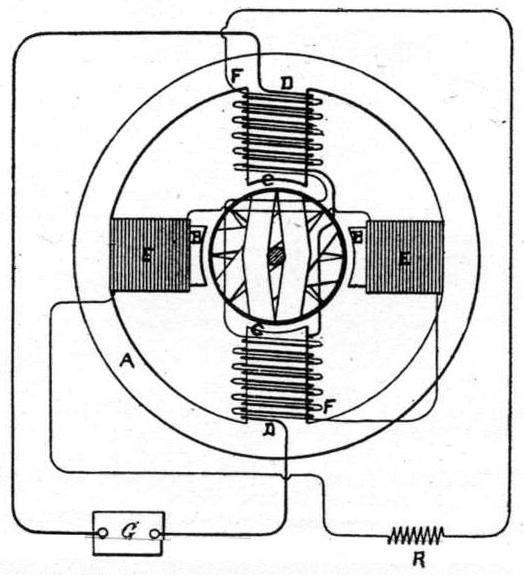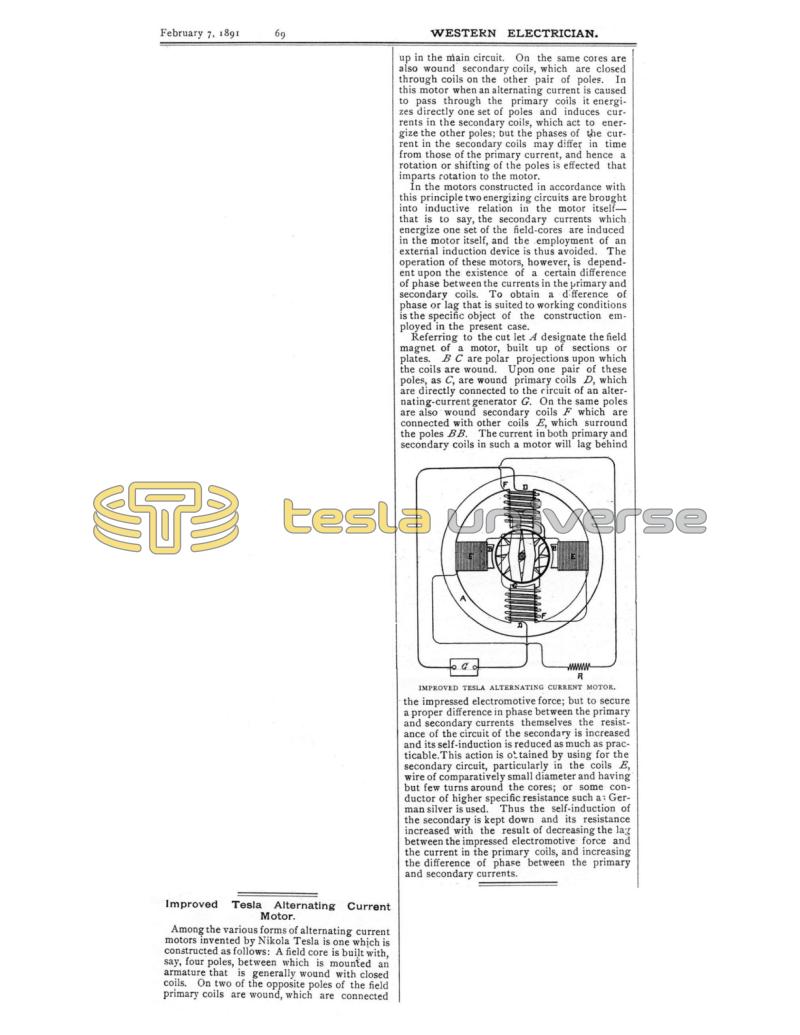
Nikola Tesla Articles
Improved Tesla Alternating Current Motor
Among the various forms of alternating current motors invented by Nikola Tesla is one which is constructed as follows: A field core is built with, say, four poles, between which is mounted an armature that is generally wound with closed coils. On two of the opposite poles of the field primary coils are wound, which are connected up in the main circuit. On the same cores are also wound secondary coils, which are closed through coils on the other pair of poles. In this motor when an alternating current is caused to pass through the primary coils it energizes directly one set of poles and induces currents in the secondary coils, which act to energize the other poles; but the phases of the current in the secondary coils may differ in time from those of the primary current, and hence a rotation or shifting of the poles is effected that imparts rotation to the motor.
In the motors constructed in accordance with this principle two energizing circuits are brought into inductive relation in the motor itself - that is to say, the secondary currents which energize one set of the field-cores are induced in the motor itself, and the employment of an external induction device is thus avoided. The operation of these motors, however, is dependent upon the existence of a certain difference of phase between the currents in the primary and secondary coils. To obtain a difference of phase or lag that is suited to working conditions is the specific object of the construction employed in the present case.
Referring to the cut let A designate the field magnet of a motor, built up of sections or plates. B C are polar projections upon which the coils are wound. Upon one pair of these poles, as C, are wound primary coils D, which are directly connected to the circuit of an alternating-current generator G. On the same poles are also wound secondary coils F which are connected with other coils E, which surround the poles B B. The current in both primary and secondary coils in such a motor will lag behind the impressed electromotive force; but to secure a proper difference in phase between the primary and secondary currents themselves the resistance of the circuit of the secondary is increased and its self-induction is reduced as much as practicable. This action is obtained by using for the secondary circuit, particularly in the coils E, wire of comparatively small diameter and having but few turns around the cores; or some conductor of higher specific resistance such as German silver is used. Thus the self-induction of the secondary is kept down and its resistance increased with the result of decreasing the lag between the impressed electromotive force and the current in the primary coils, and increasing the difference of phase between the primary and secondary currents.

